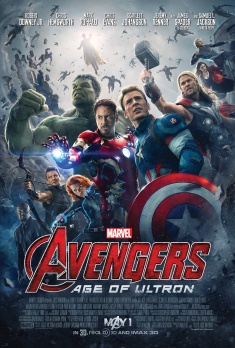Here are some FACTS which may affect your current thinking on visual media. It not a sales blurb they’re just honest facts:
- The USA is about 4-5 years ahead of Europe in leveraging visual media for sales and training
- If your company isn’t using video to sell to your clients, either online or in person, you are losing sales
- If you have poor quality video material to sell your products you are damaging your brand
- If you’re using videos in the old 4:3 format you are losing sales And damaging your brand
- If you’re paying thousands of pounds to a film school graduate to produce your corporate material you are wasting money
- Equally if you’re paying ‘Bill from down the road’ a ‘tenner’ to film your exhibition stand “’Cus we need some video for Facebook or Twitter” then you are only proving the maxim that “A fool and their money are easily parted.”
In short, if you’re looking at your video marketing or advertising material wandering “Is it good enough?”- You already know it is not good enough!
I know all this may sound harsh and I fully understand if you want to stop reading now. But…
 …Before you do, please answer me one question: Were you (the reader) any less harsh on the last movie or TV series you saw?
…Before you do, please answer me one question: Were you (the reader) any less harsh on the last movie or TV series you saw?
Didn’t you look at the ‘overpaid’ actors and wonder “How much did they get for this?” Maybe you liked the special effects “But they weren’t that great were they?” And the film is “Nothing like the book is it?”
Rightly or wrongly we all judge on what we see. If what we see on screen falls short of what we expect we react to it – usually negatively. It’s unlikely that we ever give the benefit of the doubt to the video maker, so the damage is done. And as we know, bad news travels fast.
Only last week I had to contact a colleague (he runs a cutting edge tech company) and let him know his social media ‘expert’ had posted a video of his company from 4 years ago. It was like Apple running an ad campaign, today, hailing the birth of the iPad. The worst part was it made the company’s brilliant new tech look like recycled old kit. The video gave the wrong impression of the company and its products. If that old video lost just one sale, it will have cost my colleague thousands.
For me it also highlighted the underlying fact that videos themselves have changed, becoming a more fluid medium. Today’s videos and advertisements are moderated and re-evaluated by our feedback (Likes, Retweets, Reblogs) to them.
Previously an advert would be shot like a small film – once complete it was cast in stone till the next one. Not so any more. Now it’s more likely that you’ll see an advert hit the web or TV, then within two weeks, you’ll see a re-edited version of the advert run for the duration of the ad campaign. This is because the advert has been split-tested with a variety of focus groups and audiences to see which version works best. Version 1 didn’t work out but Version 3 kept the attention of the demographic, so Versions 1, 2 and 4 went in the bin.
In today’s smartphone society there is no excuse for crappy looking video. It’s not a major financial investment anymore. You have a full HD camera on the back of your phone for one thing! The real investment is the time taken to create and split test something which will have a visual appeal and deliver the right message.
I have been talking about creating media for some time and recently, after a college speaking engagement, I began developing a course for students called Smartphone Film School. I realise that that the same changes that have occurred for film students, have also opened a very positive avenue for SME’s. Well the one’s looking to create their own media anyway.
With some thought and planning you can release your inner ‘Spielberg’ and make some very nice material for yourself or your company. All that’s needed is the framework within which to create the best possible story around your products.
The Smartphone Film Studio (Corporate version) will be available on the Education and Training TV (EATT) platform mid-February. It’s all being filmed on an iPhone and tablet so you can see just how far you can go with the free film studio you carry in your pocket.
To leave on a super positive note here are three facts to get you thinking:
1.8 Million Words – That’s the value of one minute of video, according to Dr. James McQuivey of Forrester Research. That’s the equivalent of 3,600 typical web pages. If you write an average of one web page an hour, it would take you 150 days of writing to achieve the impact of one minute of video.
75% – That’s the percent of executives who told Forbes that they watch work-related videos on business websites at least once a week. The results breakdown:
• 50% watch business-related videos on YouTube
• 65% visit the marketer’s website after viewing a video
90% – The percentage of online shoppers at a major retailer’s website who said they find video helpful in making shopping and buying decisions. Retailers who provide online video to show off their products report that the products with video sell a lot more than products with no video.
Thanks to Andrew Follett at Video Brewery for his facts.
Thanks for reading and as usual any comments to Mark Alexander Todd at Guvnor Media

 Of the three Cardinal Sins, the Third Sin is probably the most difficult to explain on paper, as video is a visual medium. But, if you don’t speak the ‘language of film’ you might find you connect with the audience…in the wrong way.
Of the three Cardinal Sins, the Third Sin is probably the most difficult to explain on paper, as video is a visual medium. But, if you don’t speak the ‘language of film’ you might find you connect with the audience…in the wrong way.

